It depends on different things. But, still, when you buy a new bird feeder and hang it out among the bird feeder station, during winter, when stress is high on the birds, they’re stressed out, and they need to find food sources, but naturally, it’s a defense mechanism in birds to be shy of a new bird feeder that they don’t know.
Even if they’ve been coming for a long time to old bird feeders and you put this new bird feeder among them, their instincts are likely to be “That thing’s going to eat me” they tend to be scared and shy and avoid it, cage feeder even scarier for birds.
What birds will come first to the new feeder?
So for a new bird feeder, you kind of have to give that bird feeder up to two weeks, and the brave birds like blackcap chickadees are by far the bravest out there, and they’re usually the first birds to discover or even try a new bird feeder and then once they get on and the other birds see them do that, they start to eat there, too, and then the feeder takes off, and it starts to get active.
Reasons birds avoid your bird feeder?
Three reasons birds avoid feeders,
feeder looks different,
putting a different food,
changing the location of an existing feeder
they need to get used to the food, the look, and the position. Give them some time. They will get used to it and may like it much better once they get past the change.
How to get birds in your feeder:
1. Think like a bird:
If you look at this bird feeder, the reason it works so well is that,
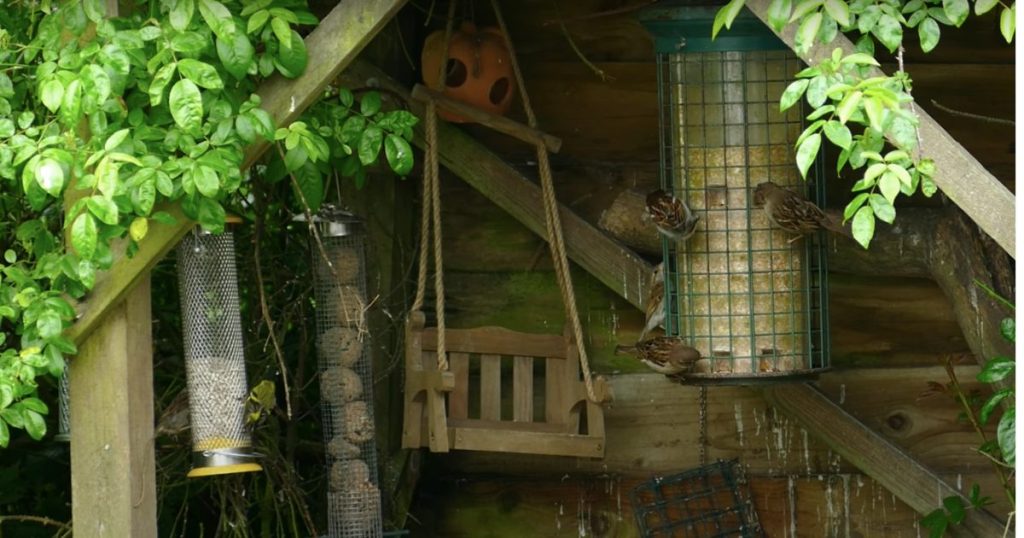
All the birds in the garden are hardwired to lookout all the time for Falcons and hawks, especially sparrowhawks, and it’s their number one priority, so when they’re feeding, they’re looking around them, so try to make bird feeders in bushes or shrubs. That’s the only way they’re going to feel secure.
So avoid having your bird feeder in the middle of a lawn or against a fence with no escape. Have it near something that the birds can fly behind or through to escape an oncoming threat.
2. Birds are different:
All birds are different, and they’re all specialist feeders in a different thing, but the very cheap bird food doesn’t attract many birds. Not very many birds want to eat whole bits of corn and wheat. Use high-quality bird food that will have a lot more success than the very cheap stuff, so go for that, and you’ll probably see a lot better results
3. Provide a different variety of food:
When you have a variety of garden birds, start feeding them with a good-quality seed mix,
Three main foods that you really need in your garden to feed the birds.
Now, the first is effectively your seed.
So there’s so much confusion about what seed is best? What mix is the best?
One of the best things you can buy is the sunflower hearts, without the black husk or the shell on them. Greenfinches, in particular, like to remove this black husk. They will eat the standard seed. It saves them the energy of trying to break the husk off. So, sunflower hearts, and if you can get them in a feeder like this one here,
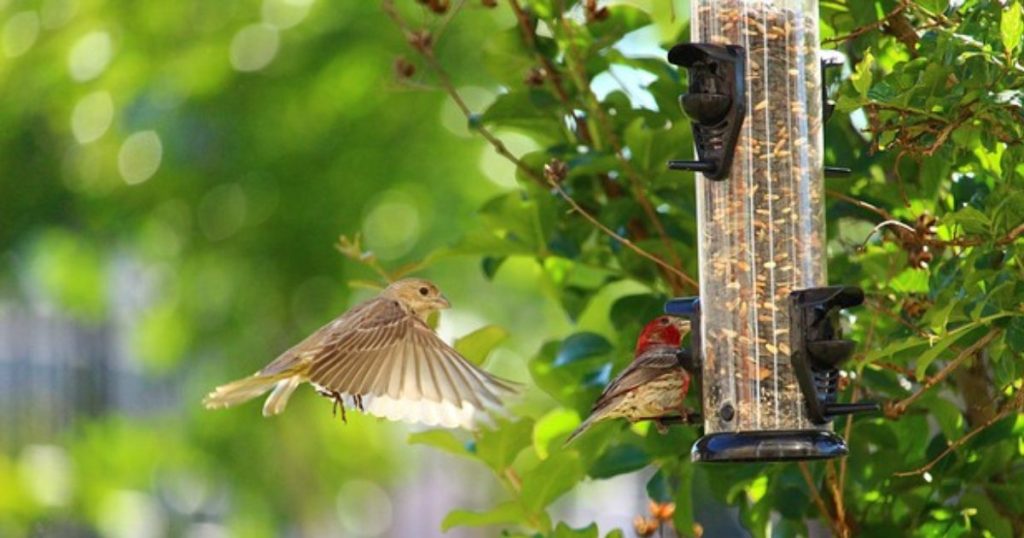
I mean, this is a standard four-port feeder. As you can see, it has these little perches for the birds to sit on and then, of course, get the food from inside. So, yeah, get a couple of these if you can. They are really good. And, of course, lots of bird species will use these. So things such as blue tits, grey tits, green finches, goldfinches, the list is quite extensive.
A lot of birds will eat from feeders, but not all will. Birds such as wood pigeons, collared doves, and robins from time to time, I’ve seen. But a lot of these birds, blackbirds as well, of course, prefer to be on a flat surface, either on the ground or on a table. So one of the ways you can provide food is often in these little trays.
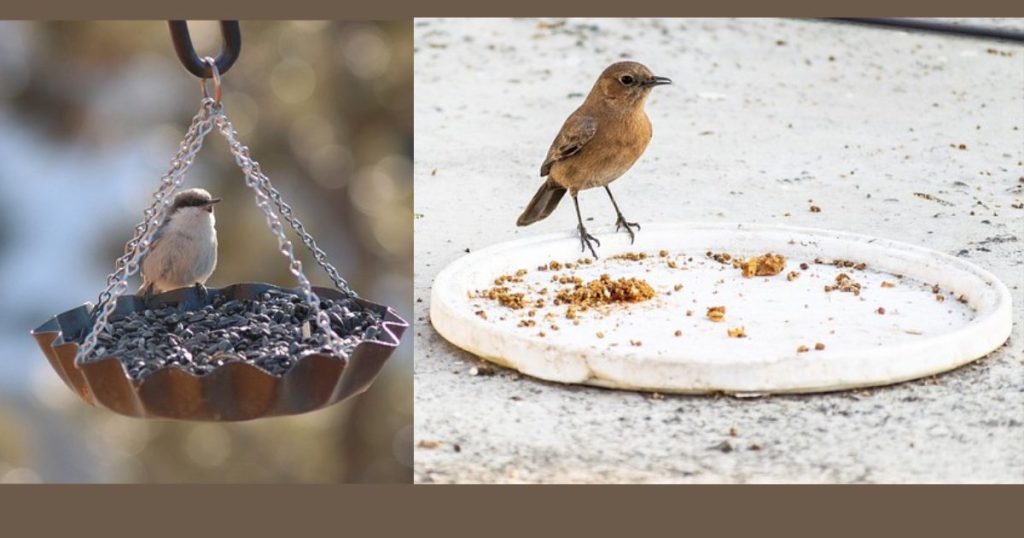
You can buy these little trays online, and they’re quite good if you don’t want the mess to be exactly on the ground and you just want to raise it up, for example, out in the middle of a lawn.
You can provide a mix of peanuts and sunflower hearts for those birds that can’t get on the feeders. By having nuts like this, you’re likely to attract birds such as magpies and jays.
So peanuts, Sunflower Hearts.
You can also get Niger Feeder, this isn’t an essential one, but it’s absolutely adored by goldfinches. But recently, goldfinches are actually moving back to Sunflower Hearts, so don’t worry too much if the budget won’t permit to get niger seeds and feeders.
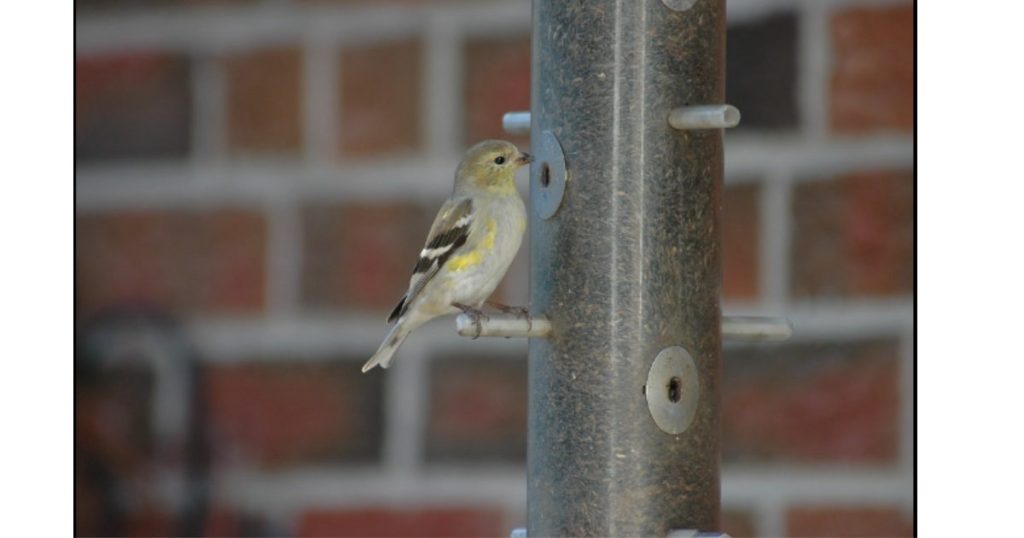
The last is fat. You can use suet balls, which is just absolutely brilliant for so many species. And for those, you will need one of these feeders.
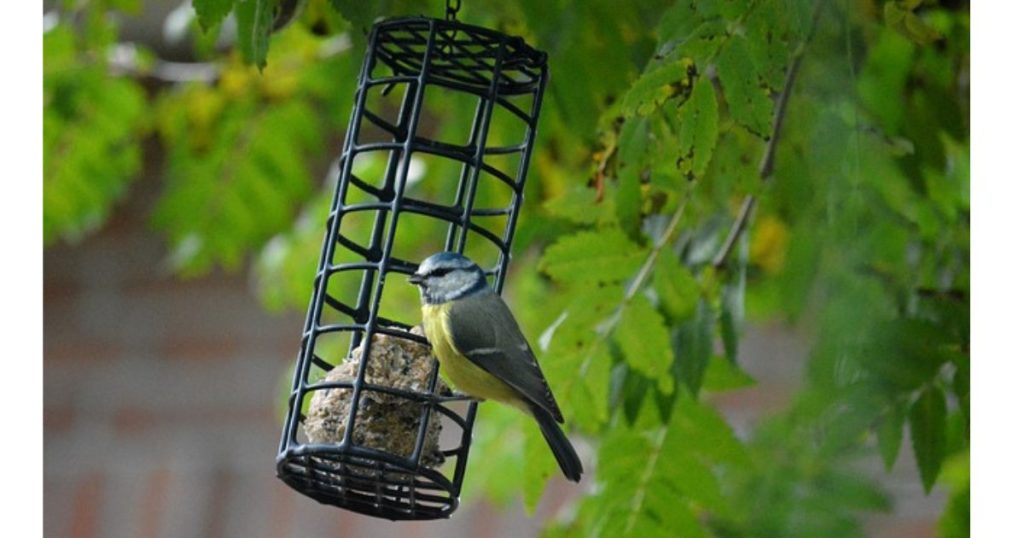
This is quite an open mesh feeder, and you can just literally slide the top off and put these fat balls. These are known as fat balls, but it doesn’t last very long when a starling or a flock of starlings turns up.
This is probably the best way to attract starlings to your garden. Put up some fat feeders, and they absolutely go mad for it. And you often get a few fights breaking out at the feeders themselves, which can be quite entertaining to watch.
But, of course, if you haven’t got a mesh feeder like this, another option for the suet is one of these,
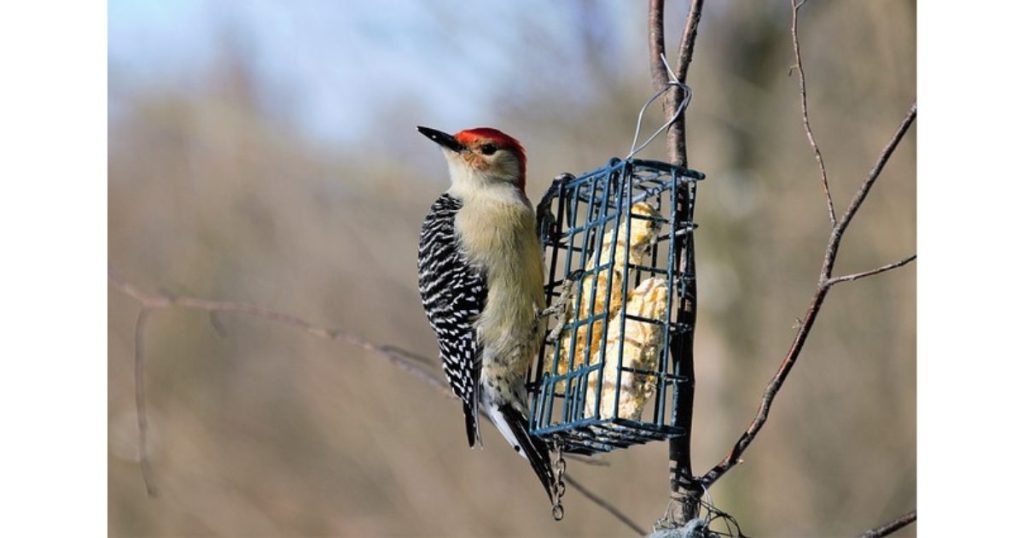
which is another good idea. It’s a bit smaller mesh, and it’s good to try and stop the squirrels from getting in. Obviously, they still need to eat and don’t think to deter them entirely.
But these fat squares are a really good idea as well. And again, you just pop the top open and slide a fat square in, which is a great idea. And I just hang somewhere in the corner, house sparrows, go through one of these pretty quickly.
So, yeah, really, they are the main food groups.
Nuts in spring:
It’s very important to stop feeding peanuts and a lot of larger seeds in the spring because, obviously, they can be a problem for a lot of younger birds, especially for chicks. As they are newly hatched, they can’t eat these. The best way is to stop all these unnatural sources of food for the birds at this time of year.
Birds have adapted to eat and feed insects to the young. So the best way you can do that is to plant trees and shrubs, native trees and shrubs that are going to attract these insects, and caterpillars that provide a natural food source for the birds.
Holly tree would be a great choice. It has about 30% berry food source, but they soon go down quickly at this time of year. The berries from a holly will naturally attract Red Wings, Fieldfares, Blackbirds, and Wood pigeons. So natural food is, of course, the best way. So please stop feeding bigger peanuts and things because, of course, young chicks can’t digest and actually choke on, particularly whole peanuts themselves.
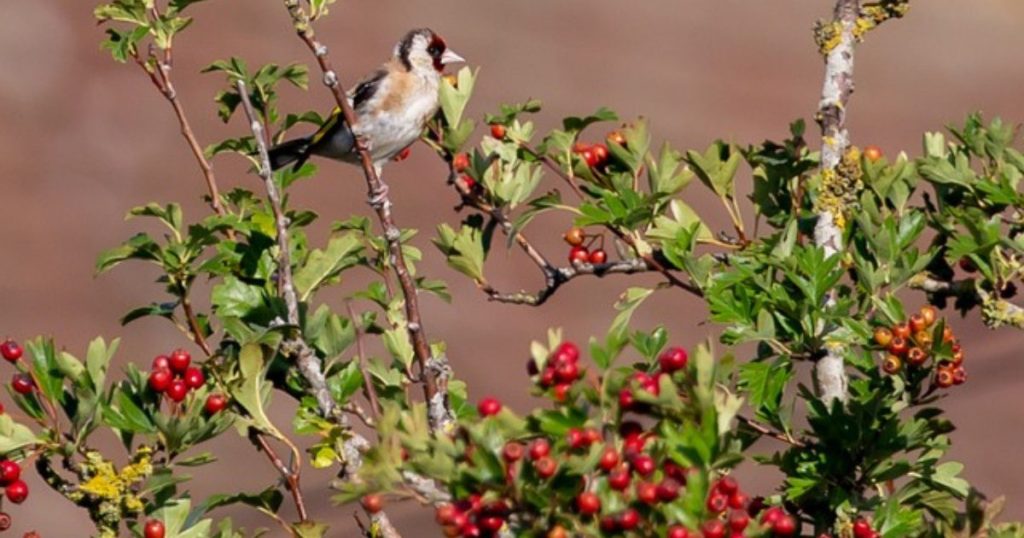
By the time spring comes, have enough natural food in your garden or around the area to feed the birds or supply food for the birds naturally.
4. Have a shallow source of fresh water nearby:
Clean freshwater will do more good than having the bird table there on its own.
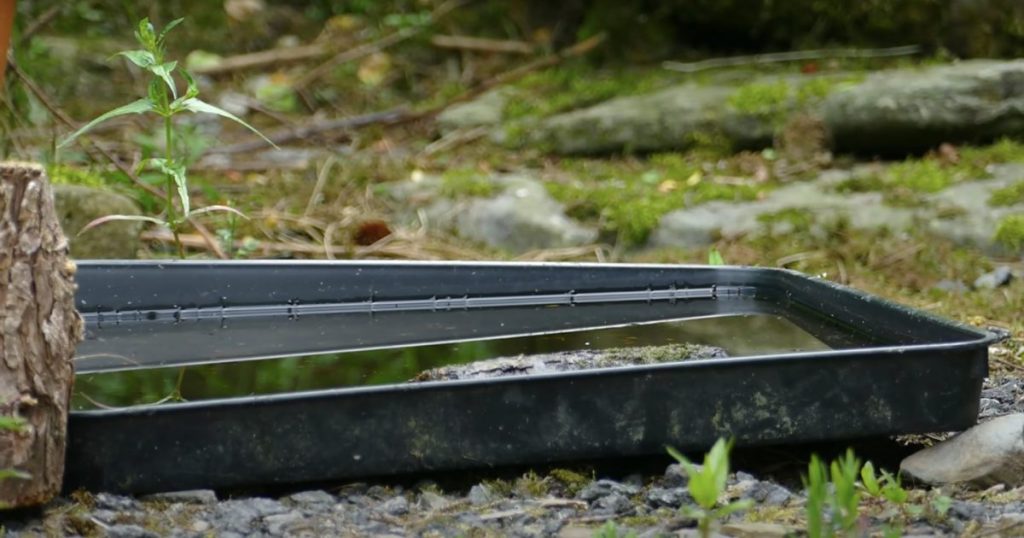
All the birds in your garden, at some point, need fresh water. Fresh water is cheap, free, and easy to do, and it will attract absolutely everything that will want to drink at some point, especially when it’s just been feeding.
But be careful when providing water during winter time. It may kill the bird. For more details, click here,
5. Control predators:
If you have blackbird problems, squirrel problems, or raccoon problems, they can be addressed a lot of times through the seed you’re feeding. Safflower and niger are the two most famous ones for that. Blackbirds and grackle don’t like safflower and niger. The same thing to squirrels, so in those problematic scenarios, we recommend niger or safflower, remember those seeds are not as widely liked by all the birds,
even though this is great for the problematic situation, for most birds, if you give a choice between a niger seed and a sunflower chip, most birds will be going to choose the sunflower chips, the same way a lot of birds prefer sunflower over safflower.
- Provide feeders of multiple types in different locations:
If you like feeding all the birds in your yard but don’t like certain species being attacked, you can set up different types of feeders and put them in different locations.
For example, a finch feeder in one part of your yard and a platform feeder in another having multiple setups can require a lot of refilling, but it might help you achieve higher diversity of species in your yard with less bullying some backyard feeder watchers will also set up diversion feeders that are away from the rest of their feeders and have food items that invasive species actually prefer such as crack corn.
- Keep seeds off the ground.
Many aggressive birds prefer to feed on the ground, so having a platform underneath your feeders to catch falling seeds may help keep these birds away, having a platform. You could also put something like a garbage can under your feeder to collect excess seeds. It’s unlikely that bully birds will go into the can to feed.
What time of the year bird feeder is slow?
During the summer months, bird activity is lower because they’re eating a lot of insects, and they’re nesting and bringing in their baby birds, so there are not as many birds in their backyard, that first bag of birdseed you buy is going to last you quite a bit longer during September and October, you have to wait a month or more before they get good activity because mother nature is just providing so much for them, like wild seeds and berries.
When Does The Bird Feeding Season Start?
When things start to cool off, those cooler conditions don’t coincide with food stress on the birds. The fall is the time of bountiful food supplies for birds, many of the native plants are burying out, and seeds are ripening. Those are all natural food supplies, and there are also insects around, so bird feeding is quite slow at this time, but birds still come to your feeders occasionally. Still, the true activity will not start and get really heavy until temperatures go down and food supplies become lower. Stress goes up, and that is colder temperatures freezing and thawing colder nights.
If you’re a wild animal, whenever temperatures are mild, you have the luxury of taking extra time to find food. Whenever conditions get harsh, it’s much harder, and you have to settle for something that maybe doesn’t taste quite as good to you or something that is a lot easier for you to find. Bird feeders are a prime example of that.
Make sure your seed is fresh. People, we always get this question. I’ve had this seed since last year.
Bird seed, unless refrigerated and kept in a cool, dry basement, is typically not enough, but if you keep it refrigerated or in a freezer, you can use that. Still, the rule of thumb is you never keep bird seed in your feeders longer than a month, and you never keep it in storage longer than three months. Hence, if you have seed that’s older than that, it’s probably worth giving it to the raccoons and just throwing it out into the woods, so when you get started feeding to help birds don’t fill your feeders all the way full, only put half in your feeders until they really start coming and then you’ll be filling it a couple of times a day whatever the stress dictates on them.
So I hope this helps you get a really good busy bird feeder, which is a fantastic thing, and a new bird feeder takes time, be patient and give it time. A couple of days isn’t enough. Normally you need to leave it there for weeks and keep it full of food, and hopefully, you’ll end up with loads and loads of birds, and you can find out exactly what’s in your area.
Also, To learn more about how to choose a bird feeder to attract birds, click here.